9 Brilliant Low-Tech Tricks to Keep Your Home Cool Without Air Conditioning
I’ve lived through enough summers to know one thing: once the heat kicks in, your home can start to feel like a slow cooker. And while air conditioners are the obvious go-to, not everyone wants the high bills—or even has the option.
That’s where low-tech ways to cool your home come in. No, I’m not talking about anything fancy or complicated. Just smart, proven tricks—some ancient, some clever, and all refreshingly practical—that can seriously cut the heat without a single watt of AC power.
These are the same methods people have used for generations. From window hacks to smart fan placement and natural airflow strategies, you’ll be surprised how much cooler your home can feel once you stop fighting the heat—and start outsmarting it.
Whether you’re trying to save money, live more sustainably, or just want to survive a power outage in July, you’ll find real, doable solutions here.
Let’s dive into the smartest low-tech cooling tricks I swear by.
And no—they’re not the same five tips recycled from every blog.
Have you ever tried cooling your home without AC? What worked—and what didn’t?
Let me know in the comments. I’d love to compare notes.
1. Block the Heat at Source — Shade Strategically
The first rule of cooling your home without AC? Don’t let the heat in to begin with.
Most of the warmth you feel inside during summer isn’t from the air—it’s from sunlight pouring through windows and heating your walls, floors, and furniture. Once that heat’s inside, it lingers. So before you even think about airflow or fans, you need to work on keeping the sun out.
Use Exterior Shading, Not Just Curtains
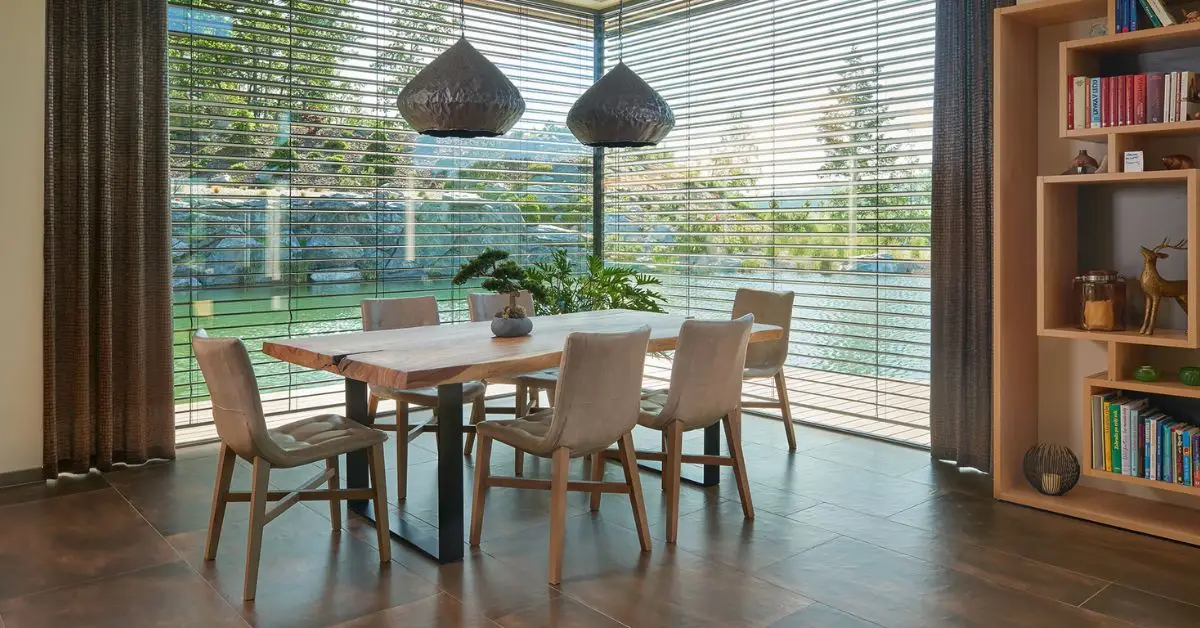
Indoor curtains help, but exterior shading is far more effective. Awnings, external blinds, or shade sails block sunlight before it hits your windows. Properly placed awnings can cut solar heat gain by 65% on south-facing windows and up to 77% on west-facing ones. That’s a huge drop—without touching your thermostat.
If your home has large windows or glass doors, especially facing west, this should be your first fix.
Plant Shade That Works for You
If you own your space, even a small yard or balcony, use it. Planting deciduous trees (that lose leaves in winter) on the sun-facing sides of your home will shade walls and windows in summer—but still let in sunlight during colder months. Climbing vines like ivy or Virginia creeper on trellises can cool exterior walls naturally. Eartheasy notes that well-placed landscaping can reduce surrounding air temperatures by several degrees.
Even potted plants on balconies or overhangs help. Every bit of shade slows heat absorption.
If you’re looking for quick, budget-friendly upgrades to beat the heat, here are 11 easy summer home updates that transform your space on a budget.
Reflect Instead of Absorb
Lighter-colored surfaces reflect sunlight, while darker ones absorb it. If you have the option, use white or reflective window film, light-colored shades, or even temporary white sheets outdoors to bounce sunlight away. It may not look glamorous—but it works, especially during heatwaves.
This section is about prevention. If your home absorbs less heat during the day, you won’t have to work as hard to cool it later. It’s the foundation every other trick builds on.
Have you ever noticed how much hotter a room gets just because of direct sun? Try blocking it for a day and see the difference—it’s more than you’d expect.
2. Smart Windows & Ventilation Design
Once you’ve blocked out the sun, your next focus should be airflow. Without proper ventilation, your home turns into a sealed oven. But with a few small adjustments, you can create natural cross-breezes that make even the hottest days manageable—without spending a rupee on machines.
Open the Right Windows at the Right Time
A lot of people just crack open a few windows and hope for the best. But smart ventilation is about timing and placement.
During the day, keep everything closed if it’s hotter outside than inside. As soon as evening sets in and outdoor temps drop, open windows on opposite sides of the house to pull cooler air through.
This is called night flushing—and when done consistently, it helps release built-up heat from walls and floors overnight.
Use Cross-Ventilation Like a Pro
Position fans near windows to push warm air out and pull cool air in. Ideally, place one fan facing out on the hotter side of your home (usually west-facing) and another fan pulling air in from the cooler side (often north-facing or shaded).
Bonus tip: open high windows on one side and low ones on the opposite side. This creates a convection current that naturally draws warm air upward and out, while pulling cooler air in down below.
Sash Windows? Use the Top and Bottom
If you live in a place with sash or double-hung windows, open both the top and bottom slightly. Hot air escapes through the upper opening while cooler air enters through the lower. It’s a simple move that creates a self-sustaining airflow loop.
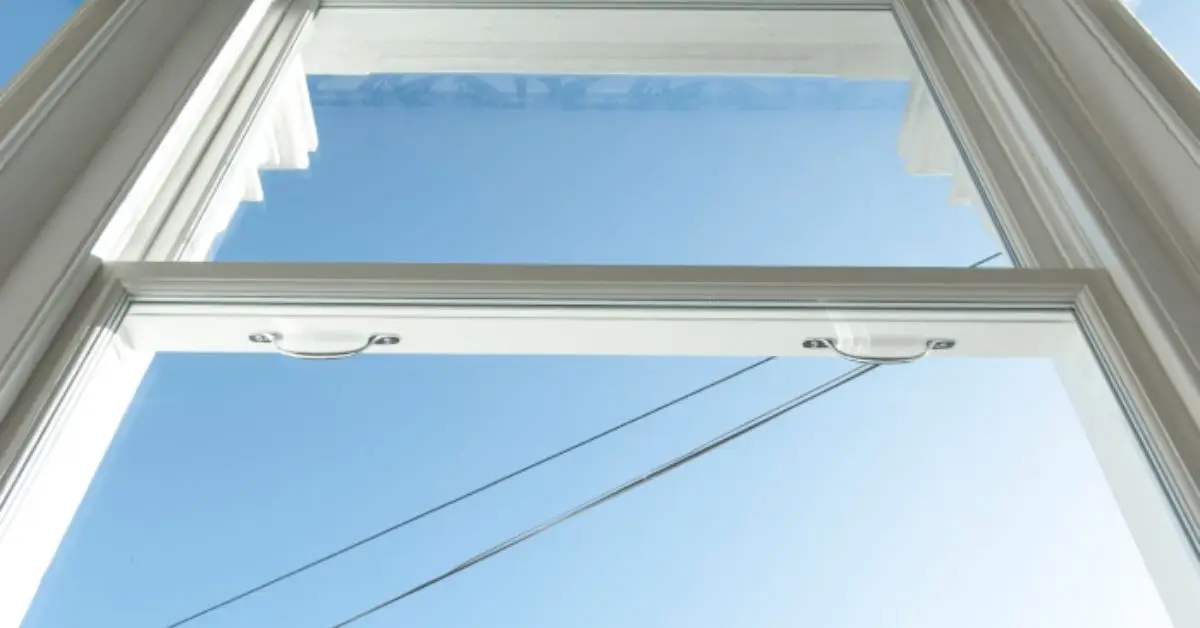
This trick is backed by airflow experts and has been featured in publications like Ideal Home UK.
Airflow is your secret weapon when you don’t have AC. But random ventilation doesn’t help—you need to guide air through your space with intent. These small tactics make a big difference, especially at night when indoor heat peaks.
Ever tried sleeping with windows open and still felt sweaty? Try adjusting the fan direction and using cross-ventilation—it’s a total game changer.
3. Fan Hacks & DIY Evaporative Cooling
If you’re relying on fans alone, you’re only doing half the job. Fans move air, but they don’t lower temperature—unless you know how to make them work smarter. With a few tweaks, you can turn a basic fan into a legit cooling tool that actually feels like AC.
Create a Cross-Breeze That Works
Most people just plug in a fan and aim it at themselves. But to cool an entire room, place fans strategically—not randomly.
Set one fan near a shaded or cooler window to pull in outside air. Then position another fan across the room (near a hot window or hallway) to push warm air out. This “push-pull” setup creates a cross-breeze that actually flushes heat out of your home.
Works especially well at night when the outside air is cooler.
Hack the Fan with Ice or Wet Cloth
Here’s a classic trick: fill a bowl with ice or frozen water bottles and place it in front of your fan. As the air blows across the ice, it picks up moisture and cools the room through evaporative cooling.
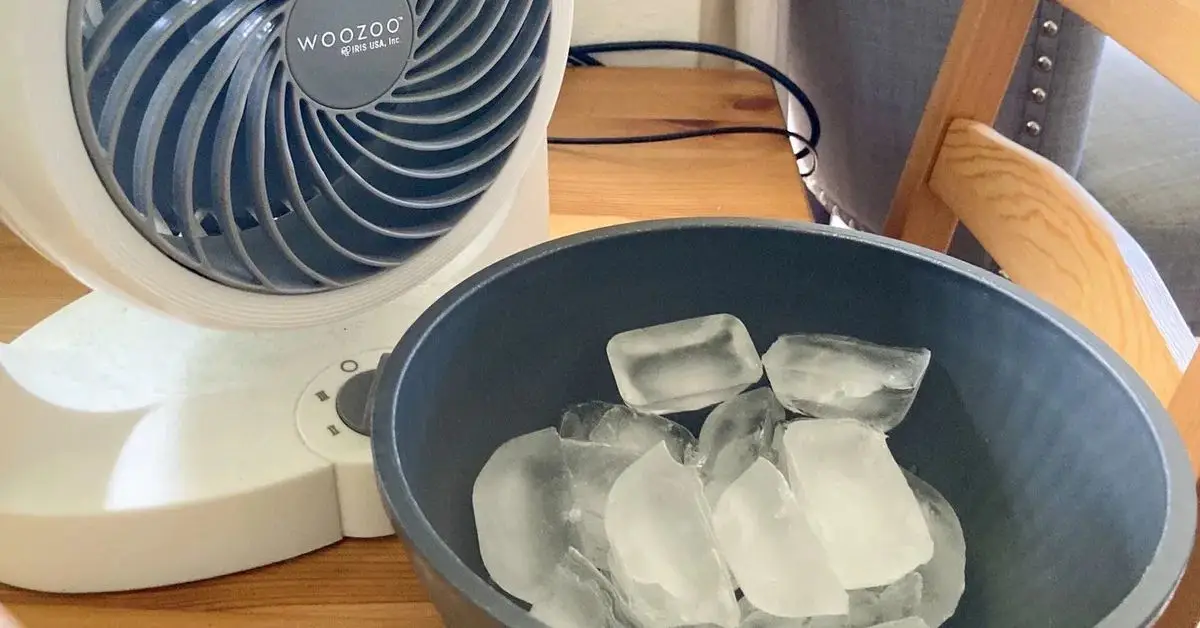
The Seattle Times
Another option? Hang a wet cotton sheet or towel in front of a fan. As the water evaporates, it chills the moving air. You’ve basically built your own swamp cooler—for free.
This method is especially useful in dry climates, and it’s been shared by real users in places like Reddit’s r/Frugal who swear by it during heatwaves.
Flip Your Ceiling Fan (Yes, Really)
Most people don’t know this, but your ceiling fan has a summer and winter setting.
In summer, it should spin counter-clockwise to push cool air downward. If it’s spinning the wrong way, you’re just recirculating warm air. Flip the switch near the base and feel the difference immediately.
Also, sleep low if you can. Hot air rises, so placing your bed or mattress closer to the floor can shave off a couple of degrees overnight.
These aren’t generic “turn on the fan” tips. They’re practical modifications that change how air behaves in your space. You’re not just moving air—you’re transforming it.
Have you ever used the ice + fan trick or flipped your ceiling fan direction? Which worked better for you? Let’s compare cooling hacks.
4. Evaporative & Radiative Passive Cooling Systems
Not all cooling has to come from machines. Long before AC units existed, people used the environment itself to regulate temperature. These passive cooling systems don’t just lower heat—they often work better the hotter it gets. And once set up, they cost almost nothing to maintain.
Clay Pots That Cool the Air (Seriously)
This might sound old-school, but it works. In dry climates, traditional pot-in-pot refrigeration—also called a “zeer pot”—can be used not just to cool food, but to lower room temperature too.
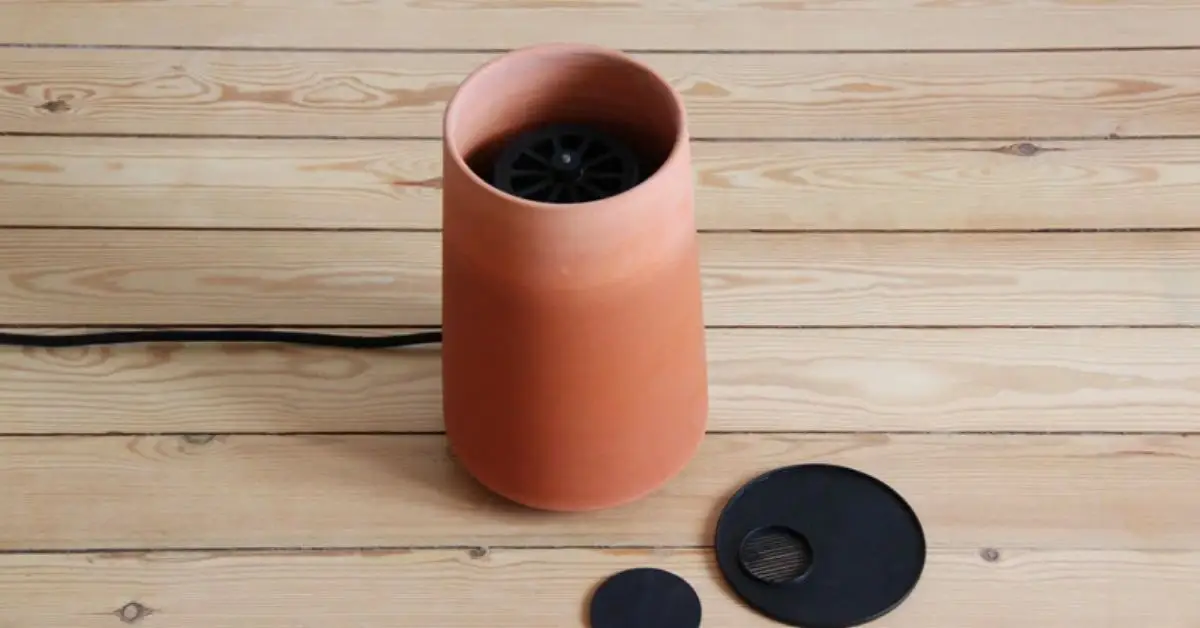
Behance
It’s simple: one clay pot nested inside another, with wet sand in between. As water evaporates through the porous clay, it draws heat out of the inner chamber. People have adapted this concept to create coolers and even basic room chillers.
This ancient method has been widely documented and explained in places like Wikipedia’s Pot-in-Pot Refrigerator page.
If you have access to unglazed clay pots and live in a dry area, give it a shot—it works surprisingly well for small spaces.
Radiative Cooling: Chill from the Roof Up
Here’s a concept that feels like science fiction but is very real: radiative cooling. The idea is that certain surfaces can release heat directly into the night sky—even when the air is warm.
Paint your roof or an outdoor surface with reflective or infrared-emitting materials, and it can start shedding heat at night, keeping your home cooler the next day.
Want to take it a step further? These 10 easy home renovation projects that’ll keep you cool all summer are worth exploring if you’re ready for long-term heat relief. This technique is even being explored in modern green architecture.
For a simpler approach, even just a white roof or reflective film can reduce solar absorption during the day, and allow your building to cool faster overnight.
Evaporative and radiative cooling don’t need electricity. Once you understand how they work, you can design your space to cool itself naturally—no fan, no AC, just smart physics.
Ever seen clay pots used in village homes during summer? That same principle can work in your modern flat too—sometimes, old ideas are just better.
5. Eliminate Internal Heat Gains
Sometimes, your home feels hot not because of the weather—but because of what’s happening inside. Lights, appliances, cooking… they all generate heat. And when it’s already 38°C outside, even a little extra warmth indoors can tip things over the edge. For more habits that unknowingly raise indoor heat and bills, check out these 5 things to stop doing at home this summer—your utility bill will thank you.
The good news? A few small changes can make a noticeable difference.
Unplug What You’re Not Using
Electronics constantly draw a bit of power even when idle—and that power turns into heat. Chargers left plugged in, your Wi-Fi router, even your TV on standby… it all adds up.
Make it a habit to unplug devices during peak heat hours. And switch to LED lighting if you haven’t already. Old incandescent bulbs release most of their energy as heat, not light.
This tip has been echoed by energy experts, including Real Simple, who recommend minimizing heat output indoors during summer to reduce cooling needs.
Rethink When and How You Cook
Cooking during the hottest part of the day is one of the worst things you can do—especially in small homes or flats. Ovens, stoves, even electric rice cookers can raise indoor temps fast.
Try to shift cooking to early morning or after sunset. Better yet, opt for cold meals, pressure cookers, or outdoor grilling when possible.
And if you’re using a microwave or toaster oven instead of the stove, you’re already ahead—those produce far less residual heat.
Use Light, Breathable Fabrics
This one’s simple but often overlooked. Thick upholstery, dark-colored curtains, and heavy bedding trap heat. Switch to cotton or linen fabrics, especially in your bedroom and living areas.
Also, go for light-colored curtains or blinds that reflect rather than absorb sunlight.
Most people focus on cooling methods—but forget the heat they’re adding inside their own home. Cut the internal sources, and suddenly everything else works better.
Have you ever cooked a full dinner in the afternoon and wondered why your fan stopped working? It didn’t—it’s just fighting a battle it didn’t need to.
6. Targeted Zones — Create a DIY Cool Room
When the whole house feels like a furnace, trying to cool every room equally just doesn’t make sense—especially if you’re not using them all. That’s where the idea of a “cool room” comes in.
It’s not a new concept. But done right, it can be a game-changer.
Choose the Right Room to Cool
Pick a single space in your home—ideally one that’s already shaded, on the lower floor, and doesn’t get direct sunlight during the afternoon. Bedrooms, study rooms, or even storage spaces can work.
The goal is to create a small, contained zone where you and your family can rest, work, or sleep comfortably during peak heat hours.
Seal It Off from Heat Sources
Once you’ve chosen the room, block it off. Shut doors, close vents, and pull curtains tight. Add a rolled towel at the base of the door to prevent warm air from leaking in.
Don’t use electronics or cook in this space. The fewer heat sources, the better. Use light-colored fabric, a fan near a shaded window, and—if humidity is low—even try the ice-bowl trick in front of the fan.
This tactic is especially helpful during heatwaves or power cuts. In fact, experts at Tom’s Guide recommend the DIY cool room method as one of the most effective emergency cooling setups for non-AC homes.
Treat It Like a Personal Retreat
Add a water bottle, light snacks, wet washcloths, and breathable bedding. This isn’t just about staying cool—it’s about staying comfortable for longer stretches without relying on electricity.
If you live with kids or older adults, this room can be a literal lifesaver on brutally hot days.
Instead of struggling to cool your entire home, focus your effort on one room. It’s efficient, fast, and incredibly effective—especially if the power goes out.
Have you ever tried setting up a cool zone at home? What space worked best for you—and how did you make it comfortable?
7. Body-Centric Cooling — Stay Cool from the Inside Out
Sometimes the smartest way to cool your home… is to cool yourself. When the space around you feels unbearable, it’s your body temperature that decides how you experience the heat.
Instead of relying only on the environment, you can shift the focus to staying cool from the inside out.
Use Water the Right Way
Don’t just drink water—use it. Dampen a cotton cloth, scarf, or towel and place it on your neck, wrists, or ankles. These are pulse points where blood vessels are closer to the skin, and cooling them directly helps lower your core body temp.
Another trick: soak your feet in cold water. It’s fast, low-effort, and surprisingly effective, especially at night.
This isn’t just advice from experience—it’s supported by health experts at GHHiN, who outline hydration and evaporative cooling as critical during extreme heat.
Wear Less, But Smarter
Go for loose, light-colored clothes in breathable fabrics like cotton or linen. Avoid tight synthetics that trap heat and sweat. If you’re staying indoors, even a damp T-shirt can work as a quick cooling fix.
You can also sleep under a slightly damp top sheet or use a chilled water bottle (wrapped in cloth) as a body cooler in bed.
Eat to Cool, Not Heat
Spicy food might feel like a good idea—but it raises body temperature short term. Stick to hydrating foods like cucumber, watermelon, and curd. Avoid heavy meals during peak hours.
Also: skip caffeine and alcohol when it’s really hot. They can dehydrate you and make you feel warmer than you are.
You can’t always change your surroundings—but you can regulate how your body reacts to heat. These hacks are fast, cheap, and extremely helpful when AC isn’t an option.
Which body-cooling trick do you rely on most when the temperature spikes? Got one your dadi or nani used to swear by? I’d love to hear it.
8. Unique Retro & Quirky Tricks People Try
Not every cooling method fits into neat categories. Over the years, people have come up with some seriously unusual ways to beat the heat—some based on science, some on tradition, and some just… trial and error.
While these may not work for everyone, they’re worth knowing. You never know when a quirky fix becomes your go-to.
The Yogurt Window Hack
Yes, this one actually made headlines. In the UK, some folks started smearing a thin layer of yogurt on their windows to reflect sunlight. Sounds ridiculous, right? But the idea behind it is similar to how white paint reflects heat.
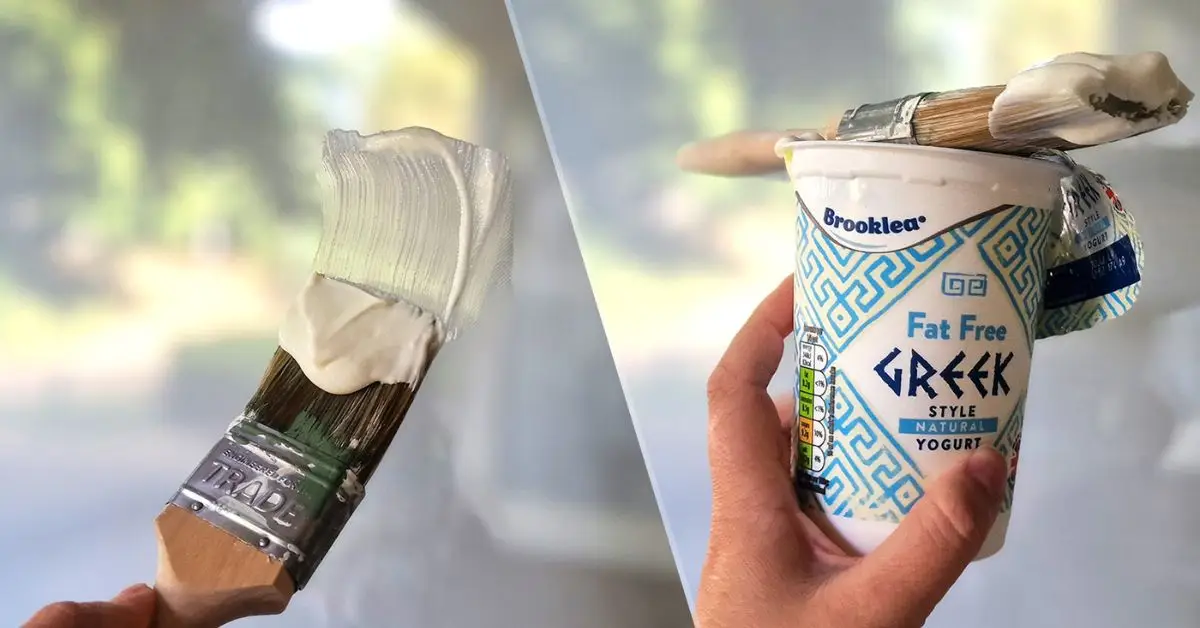
According to Homebuilding.co.uk, it can lower indoor temperature slightly—by about 0.5–0.6°C—but it’s messy and temporary. Still, it shows how creative people get when the heat won’t let up.
If you want a cleaner version, just use reflective film or emergency space blankets taped on the outside of windows.
Use of Earth-Cooled Storage or Basements
Some homes—especially older ones—have naturally cooler rooms built partly underground. These spaces stay several degrees cooler due to insulation from the earth. If you’ve got one, use it as a daytime retreat or for storing heat-sensitive items.
This principle is also used in traditional desert homes, where Trombe walls or mud structures help regulate indoor temperatures using thermal mass.
DIY Wind Tunnels or Cardboard Air Guides
Some Reddit users have shared hacks like cutting cardboard into shapes to guide fan airflow more efficiently across a room. Others use reflective car windshield shades against windows to bounce sunlight out.
They’re not elegant—but in peak heat, function beats form.
These ideas aren’t for everyone—but they highlight how resourceful people can be. And sometimes, the strange little hack you dismiss ends up working better than expected.
Ever tried a heatwave trick that sounded ridiculous but actually worked? Share it—I’ll add it to the list (with credit, of course).
9. What SERP Misses — The Overlooked Gaps
If you’ve read a few articles on how to cool your home without AC, you’ve probably seen the same list on repeat: close curtains, use fans, drink water.
Helpful? Sure. But also… shallow.
Here’s what most of the top search results don’t cover well—and what this article brings to the table.
1. No One Talks About the Human Body Enough
Most articles focus entirely on the building: the windows, the walls, the fans. But cooling starts with you. Pulse points, hydration strategy, personal fabric choices—these are all powerful tools that barely get mentioned.
It’s not just about “keeping the room cool.” It’s about keeping you safe and comfortable inside it.
2. Traditional Cooling Systems Get Ignored
Ancient systems like windcatchers, Trombe walls, or clay pot cooling barely show up in modern SERP content. Yet these have been cooling homes naturally for centuries—without electricity.
By missing these, most blogs miss out on both sustainable methods and deeper cultural knowledge.
3. Nobody Combines Strategies
Every SERP result feels like a bullet-point list. One talks about plants. Another about fans. Another about cooking tips. What’s missing is a complete system—how to layer different tricks together:
- Block sun during the day
- Cross-ventilate at night
- Use fans smartly
- Keep your body cool
- Focus on one cool zone
That’s the real power—not one hack, but how they stack.
Did any part of this guide surprise you—or sound like something no other site mentioned? Let me know. I want this to be the last guide you need, not just another search result.
Practical Wrap-Up + Take Action
Let’s be honest—staying cool without AC isn’t always easy. But it’s possible. And more importantly, it’s worth it.
You don’t need expensive gadgets or a complete lifestyle overhaul. You just need to be smarter than the heat.
So here’s what I’d do if I had to start from scratch tomorrow:
Your First Moves Tonight
- Block out the sun with dark curtains or external shade
- Open opposite windows after sunset to create a cross-breeze
- Place a fan in front of a bowl of ice or a wet towel
- Unplug anything you’re not using
- Sleep low, dress light, stay hydrated
These steps alone can drop the temperature in your room—and your body—by several degrees.
In the Next Week
- Choose a room to convert into a dedicated cool zone
- Rearrange fans to direct airflow smarter
- Plant something green outside a sun-facing window
- Try one traditional method: clay pots, reflective sheets, anything simple
- Talk to your family or roommates—cooling works better as a team effort
And from there, build slowly. Layer techniques. Adjust for your space. Make it yours.
You don’t have to suffer through summer. You just need a plan. This guide gave you one—practical, tested, and actually doable.
Now it’s your turn. Which trick are you going to try first? Or better—do you have one you’ve used that we missed here?
Drop it in the comments. I read every one.
Want more smart, practical home ideas like this? Visit Build Like New for fresh tips that actually work—no fluff, no jargon.
Disclaimer: This article is for informational purposes only. Always consider your local climate, building conditions, and consult a professional for major changes. Build Like New is not liable for any outcomes resulting from the use of these tips.


